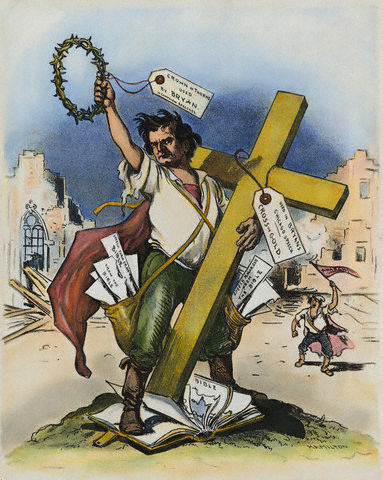Given how … anguished … Andrew Sullivan seemed to be during the run-up to voting day, he’s either calmed down dramatically or he’s renounced the over-the-top hysterics for the moment:
You can always spot a fool, for he is the man who will tell you he knows who is going to win an election. But an election is a living thing — you might almost say, the most vigorously alive thing there is — with thousands upon thousands of brains and limbs and eyes and thoughts and desires, and it will wriggle and turn and run off in directions no one ever predicted, sometimes just for the joy of proving the wiseacres wrong
Robert Harris in his novel Imperium (2006).This last decade or so, we’ve heard an awful lot about the new fragility of American democracy. So it bears noting that, after much angst, we somehow pulled this election off. Kudos to the election workers. Kudos to the voters for providing a clear and decisive result. Kudos to Harris for the graceful concession (in stark contrast to Trump in 2020). We have not lurched into another crisis of democratic legitimacy. No windows are being smashed; no statues are being torn down.
And there is, yes, a mandate. When one party wins the presidency, Senate, and probably the House, that’s usually the case. But this year, the policy divides were particularly clear, and the shift so clear and in one direction everywhere. Americans have voted for much tighter control of immigration, fewer wars, more protectionism, lower taxes, and an emphatic repudiation of identity politics. In the immortal words of Mencken: “Democracy is the theory that the common people know what they want, and deserve to get it good and hard.” We’ll soon see how that pans out.
But the good news is that we have become less tribal. The president whom Ta-Nehisi Coates derided as whiteness personified just won more non-white votes than any Republican since Nixon. The allegedly xenophobic campaigner against illegal immigration gained massively among various Spanish-speaking constituencies and many legal immigrants, especially men. The champion of rural whites somehow also made his biggest electoral gains in the big, non-white cities, and among Hispanic voters in Texas border counties. A Republican whom the left and the legacy media called a “white supremacist” won about 24 percent of the black male vote and 47 percent of the Latino male vote.
What about the huge impact of enraged women we were told about, especially in the wake of the Selzer poll in Iowa? Again: a nothingburger. Biden won women by 12 points; Harris — a woman candidate after the end of Roe — won by only 7 points. Ruy Teixeira runs through the other demos here. Gen Z? Biden won women under 30 by 32 points, and Harris by a mere 18. Meanwhile, men under 30 went from +15 for Biden to +14 for Trump — a truly staggering swing! Trump gained among Jews and Muslims! Harris was the candidate of the Upper West Side. The Bronx moved massively to Trump.
How could an entire left-liberal worldview be more comprehensibly dismantled by reality? And yet, the primary response among my own liberal friends was rage at the electorate. They texted me to insist that Harris lost because of white people — white women, in particular, their favorite bêtes blanches. The NYT’s resident race-baiter, Nikole Hannah-Jones, made her usual point:
Since this nation’s inception large swaths of white Americans — including white women — have claimed a belief in democracy while actually enforcing a white ethnocracy.
In fact, among the few demos where Harris did better than Biden were white people earning over $100,000 a year, white women, white men, and “LGBT” voters — most of whom are now young, bi, white women in straight relationships. Warming to her racism, NHJ went after “the anti-Blackness … in Latino cultures as well.” Here’s how Joan Walsh put it:
[Biden]’s got a couple things that my girl Kamala didn’t have. A penis, and that nice white skin.
But more whites went for Kamala than Biden! If you want proof that critical race, gender and queer theory is unfalsifiable, you just got it. The Dems and most of the legacy media have literally no frame of reference outside “white-bad/black-and-brown-good” and “men-bad/women-good”.
And no, Harris did not run a “flawless campaign“. Please. She ran one with no coherent message. She picked a woke weirdo as veep. She embraced neocons like Liz Cheney while never breaking decisively with Biden or the left. She had no credible answers on immigration and inflation. She had nothing coherent to say on foreign policy. She thought Cardi B and Stephen Colbert were arguments.
On Trump as a potential dictator, Americans keep telling us they don’t really buy it. They may be wrong … and maybe they are. But if you are going to respect democracy, you also need to respect their judgment, and honor their choice. I suspect they think he will throw his weight around, but will be constrained as he was last time around by the ability of the American system to stymie most radical moves. But they want him to end mass illegal immigration, and I suspect they will give him some leeway to get there. The Dems had their chance to enforce the border and instead chose to open the floodgates. What Trump now does is therefore their responsibility too.















